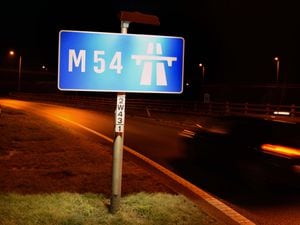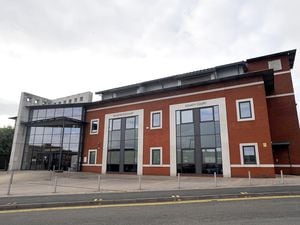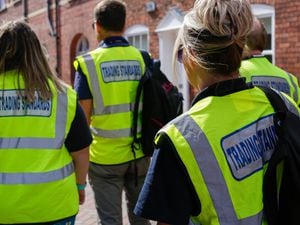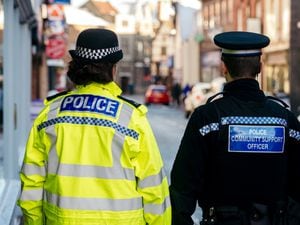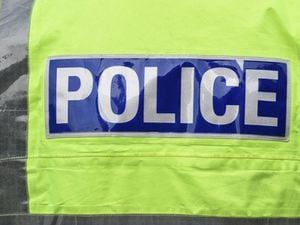Census gets an electronic makeover after 220 years
It's census time. This month every household in England and Wales will be asked to take part in the nation's biggest survey to help government plan for future needs.
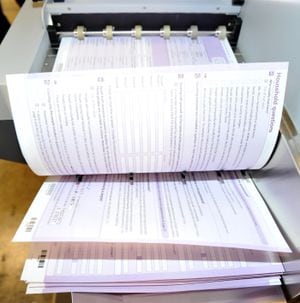
This year marks the 220th anniversary since the first modern census was held. But there is a major difference with this year's study – for the first time it will predominantly be carried out over the internet.
The Office for National Statistics, which runs Census 2021, is working with councils across the West Midlands to carry out the survey, which takes place on March 21. And if you haven't had a note through the door about it yet, you are likely to be getting one soon.
The first full census of England was the Domesday Book, that was carried out on the orders of William the Conqueror in 1086.
Several ad-hoc censuses took place over the centuries that followed. In 1270 Edward I commissioned the '1279-80 Hundred Rolls’, a national survey of landholdings in England, so called because data was collected from county divisions known as hundreds. There was also a 16th-century effort where bishops were asked to count the number of families in their dioceses. By the end of the 18th century there calls for a more formal national survey amid growing concern about the population of Britain and its demand for food.
In 1798 Thomas Robert Malthus warned in his book, An Essay on the Principle of Population, that rapid population growth would lead to famine, prompting the presentation of the Census Bill to Parliament in November 1800. The bill received Royal Assent on December 31, and the first modern census was carried out on March 10, 1801 – just 70 days after the law was passed.
The 1801 census recorded the UK population at 10,942,646, once the 324,630 soldiers serving in the Army, the 144,558 personnel in the British Merchant Navy and the 1,401 convicts on board the prison hulks were taken into account.
Information from the early censuses was relatively sparse, and details such as occupation were only recorded for people in groups rather than individuals. For the 1841 census, households were issued with paper forms for the first time, on which they were legally required to record details of everyone who stayed in the household on census night. In 1851, the schedules required fuller information, including occupations.
The 2021 census will the 23rd since the Act was passed, with the surveys having been carried out every 10 years since – apart from in 1941 when it was interrupted by the Second World War. An extra census was carried out in 1966.
Information gathered is used by central government and organisations, such as councils and health trusts, to plan and fund public services.
Sundeep Dhadley, engagement manager for Wolverhampton, says the census plays a crucial role in ensuring that people get the access to services they need.
"It provides a unique snapshot of the lives of everybody who is living in the community," he says.
"Having that understanding of who is living in different parts of the city aids organisations such as the Government and the local authority in how it should be allocating funding to serve different communities."
Mr Dhadley says that while people are being encouraged to fill out the questionnaire over the internet, paper forms will still be available for people who prefer to take part that way.
He says by now, most people in the city will have received a postcard through the letterbox informing them that they will be required to take part. This will be followed by a letter giving them an online pass code which will allow them to fill the form out over the internet. Those who prefer to fill out a paper form will be given a telephone number to contact people on.
"We are acutely aware that in certain people from certain parts of the city don't have access to a laptop or other online devices, and in those areas the census will be sent to some households in paper form," he says.
Mr Dhadley says it is not just government and public sector organisations which make use of the statistics.
"It could even be a supermarket chain which will use the data to look at how many disabled bays to provide at its store in a particular ward," he says.
"I'm a proud Wulfrunian, I have lived in the area all my life, and before I did this my background was in the charity sector, helping people from disadvantaged backgrounds, and census data was like gold dust."
But while the results will be available next year, all personal data will be kept secret for the next 100 years, Mr Dhadley added.
The latest census will be particularly important in parts of Shropshire which have seen rapid population growth in recent years. In Shifnal, the population was recorded as 6,200 at the 2011 census, but this is expected to rise to 9,200 by 2026, an increase of more than half. This has led residents to complain of the extra pressures on public services, particularly with regards to roads and infrastructure. Bridgnorth is another area growing in population, rising from 12,300 at the 2011 census to a projected 14,500 by 2026. The census will not just record the number of people living in areas such as this, but the demographic details such as age, education and income profiles, which will help with future planning.
Roger Belham, Census engagement manager Shropshire, says: "The census is the best way that we can gather the information that will allow us to plan for the future. Wherever you live in Shropshire there is someone that will provide help to complete the census and allow us to build a picture of how people live.”
Sarah Beedle, engagement manager for Sandwell, says more than 130,000 households across the borough were being contacted about taking part.
She says the data will be crucial to both charities and government when it comes to ensuring that funding is directed where it needs to be.
"It will determine what resources are needed for schools, education, bike lanes, housing, hospitals, doctors, everything like that," says Mrs Beedle.
In Dudley the 2011 census caused controversy over the way it removed broke the town up, so that outlying suburbs such as Sedgley, Gornal, Woodsetton and Wall Heath were no longer counted as part of the town. This reduced the population of the town from 194,919 at the 2001 census to 79,379 in 2011, although the population of the wider borough rose from 305,100 to 313,260.
Census 2021 will include questions about people’s sex, age, work, health, education, household size and ethnicity. And, for the first time, there will be a question asking people whether they have served in the armed forces, as well as voluntary questions for those aged 16 and over on sexual orientation and gender identity.
For people living in the Wolverhampton area, Mr Dhadley has set up an online question-and-answer session from 1pm to 3pm on March 19.
To book a slot, please see the website eventbrite.co.uk/e/help-for-wolverhampton-residents-to-complete-their-census2021-questionnaire-tickets-144468327657

